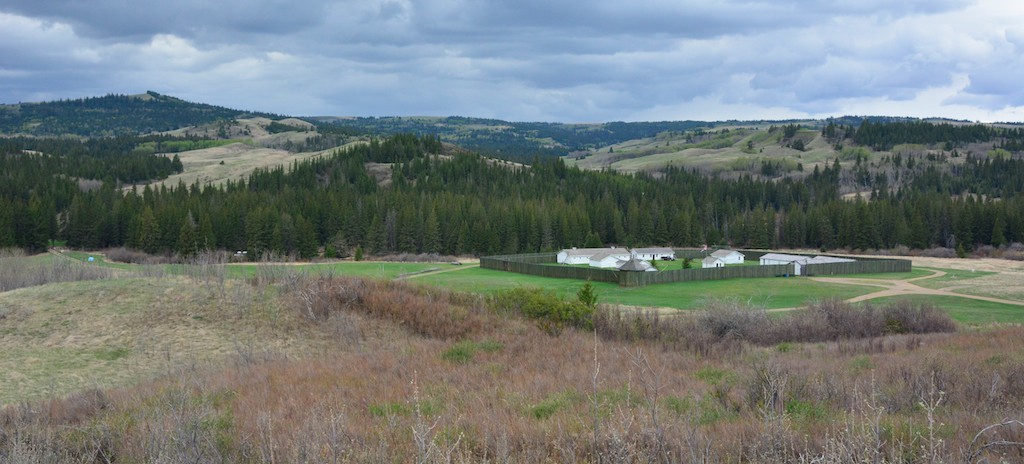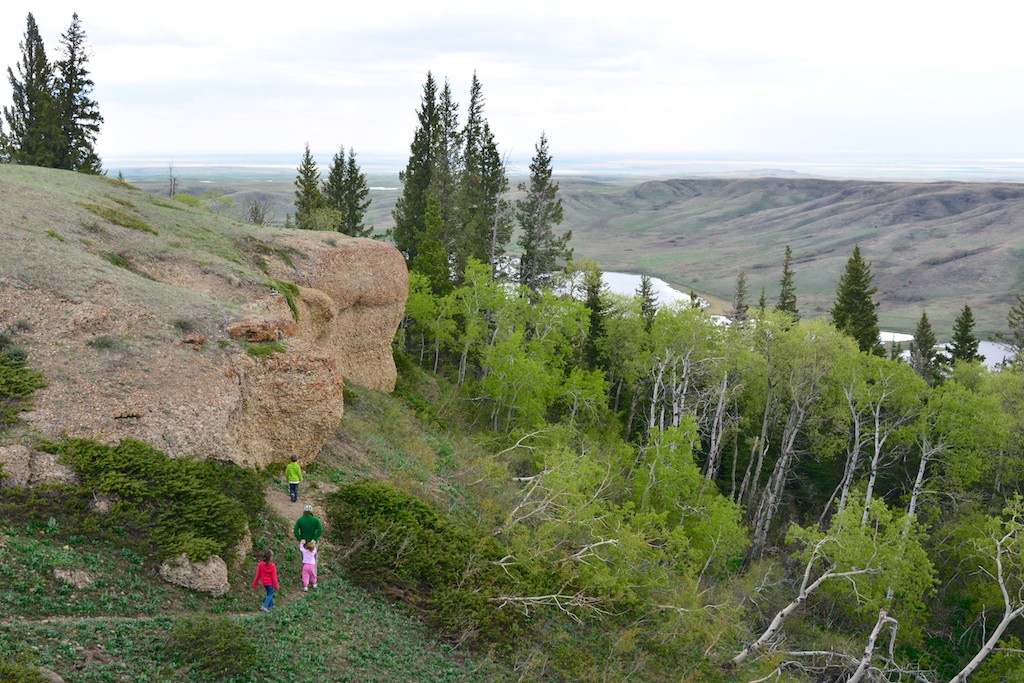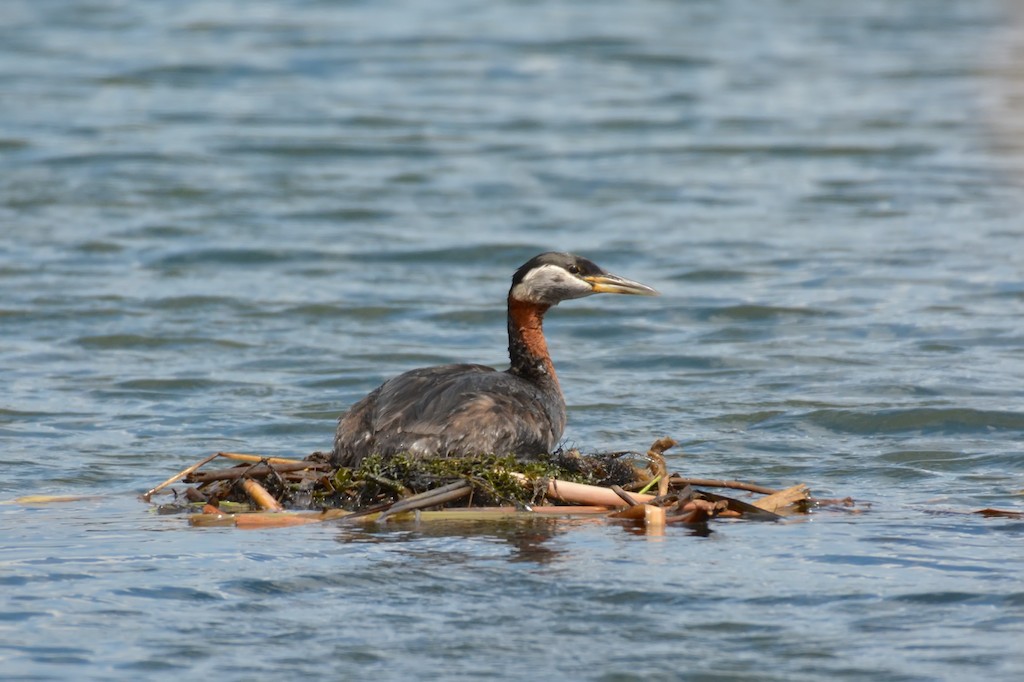May long weekend camping has, as for so many families, become a tradition for us. Living in a “two season” province, this annual ritual feels in many ways like the start of summer and it’s nicely timed for some spring migrant birding. This year procrastination on the booking shut us out of our usual destination of Kinbrook Island Provinical Park, south of Brooks, and we headed farther afield to the Cypress Hills Inter-Provincial Park, which straddles the Alberta/Saskatchewan border about 40 km south of the Trans-Canada Highway.
The biogeography of the Cypress Hills is unique due to a quirk of its geological history. During the last glaciation of Alberta, these hills were the only feature east of the Rocky Mountains not covered by ice, sticking out above the icefield as a nunatak. The hills would have been a glacial refugium for a variety of flora and fauna, while at the same time being physically shaped by the icesheet around them. Today, these hills stick out as an island of forest above the surrounding grassland, still a refuge of sorts for rare plant species and, of course, migratory birds.

Fort Walsh National Historic Site. A test of your birding obsession: does this photo make you think
a) hey look, a fort, or hey look, a bunch of really birdy mixed habitat?
In planning our trip we headed to the Saskatchewan side, because my wife said it was “better” – she grew up in Regina so who am I to argue! The park is in practice divided into two sections, west and centre, with the larger west block straddling the border. The Saskatchewan Centre Block is developed with campgrounds, cabins, and low-key resorts while the Saskatchewan side of the Western Block, which borders on the federally maintained Fort Walsh National Historic site (above), is left essentially as wilderness. As can be seen in the two images above, both zones have extremely varied habitat – prairie grasslands and ranches surround the parks, with aspen forest on the slopes and dense lodgepole forests on the top of the plateau broken up by patches of fescue grasslands.
While camping in the Centre Block, I spent some time exploring the surrounding forest and trails, finding Hairy Woodpecker feeding on deadfall and Yellow-bellied Sapsucker on healthier trunks above. An American Robin was nesting above a neighbouring site, hopefully not too freaked out by the late-night partiers that had occupied it for the weekend. Robins aside, the three dominant songbirds on my visit were Chipping Sparrows (above), which were everywhere, Pine Siskins, with a flock of over a hundred hanging around a backyard feeder, and the pink-sided subspecies of Dark-eyed Junco (below). If you are a compulsive lister, this last bird is an excellent reason to take the detour to Cypress Hills as they are widespread and this is one of only a few places in Canada to find this subspecies.
We also took a drive across the rough Gap Road to visit Fort Walsh and the West Block. Fort Walsh was both interesting and “birdy” with Mountain Bluebirds and Violet-green Swallows (below) feasting on the year’s first crop of bugs.
This route also provides the opportunity to find wetland species as the stretch of grassland between the two blocks of the park is dotted with little ponds, each with its own family or two of waterfowl. Observed nesting species included Wilson’s Phalarope, several species of duck, and Willet, including one that was aerobatically mobbing a hunting Northern Harrier. This trip was also the first time I have seen the floating nest of Red-necked Grebes up close, although this pair was unfortunately trying to start a family on the main lake in the park beset on all sides by canoes and paddleboats.
After a very enjoyable weekend in the park we headed back across the southern-most part of Alberta and Saskatchewan, checking out Pakowki Lake and other wetlands along the way, finding Eared Grebes, Black-necked Stilt, and Cinnamon Teal, and a host of grassland species such as Chestnut-collared Longspur, Lark Bunting, and Ferruginous Hawk. Cypress Hills is certainly well worth the drive, either as a detour from a trans-Canada road trip, or for a weekend away from Calgary. Lots of information about the park, including a bird checklist, can be found at www.cypresshills.com. My ebird checklists for the weekend of very casual birding are as follows: roads around Cypress Hills/Maple Creek area, Centre Block, Gap Road, West Block, and Fort Walsh.







